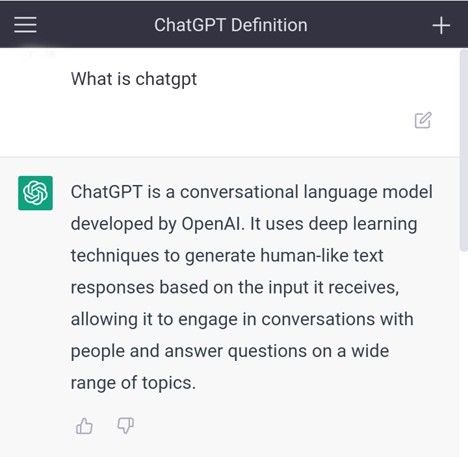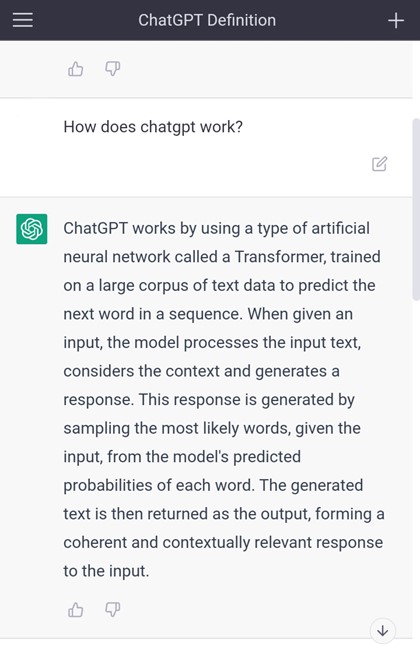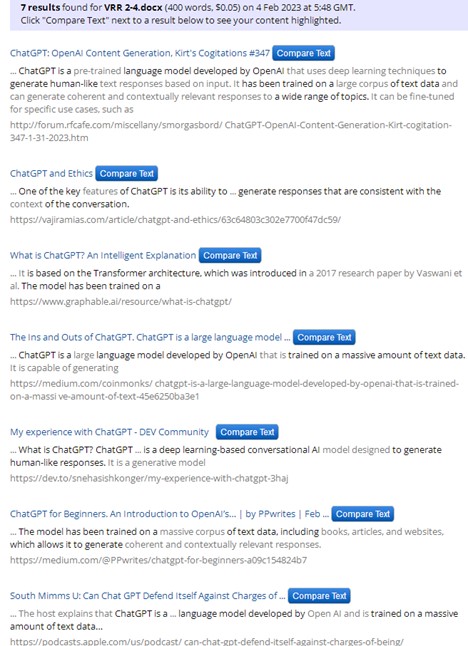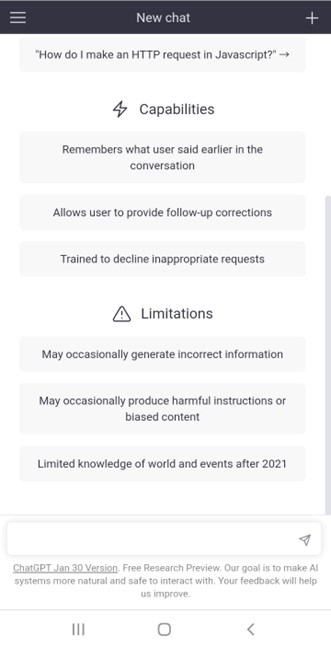ChatGPT is a cutting-edge language model developed by OpenAI. It is a deep learning-based conversational AI system that has been trained on a massive amount of text data to generate human-like responses to user inputs. The model is based on the Transformer architecture, which was introduced in the paper “Attention is All You Need” and has since become the foundation for many state-of-the-art language models.
ChatGPT uses the Transformer architecture to process input text and generate a response in real-time. The model has been trained on a diverse range of text data, including conversations, news articles, and web pages, which allows it to generate responses on a wide range of topics. When a user inputs a query, ChatGPT processes the input and generates a response by predicting the next word in the sequence. The response is generated by sampling the most likely words, given the input, from the model’s predicted probabilities of each word.
One of the key advantages of ChatGPT is its ability to generate coherent and contextually relevant responses. The model has learned to consider the context of a conversation and generate responses that are consistent with the tone and content of the conversation. This allows ChatGPT to engage in natural and engaging conversations with users.
ChatGPT has been widely adopted by businesses, developers, and researchers in various industries, including customer service, content creation, and research. The model’s ability to generate human-like responses has made it a valuable tool for automating customer service and reducing response times. In content creation, ChatGPT has been used to generate articles, summaries, and other written content, reducing the time and effort required to produce high-quality content. In research, ChatGPT has been used to study language and generate insights into the way people communicate.
In conclusion, ChatGPT is a highly advanced language model that is changing the way people think about conversational AI. Its ability to generate human-like responses in real-time has made it a valuable tool for businesses, developers, and researchers across a wide range of industries. As the model continues to evolve and improve, it will likely have an even greater impact on the way we communicate and interact with technology in the future.
ChatGPT in School
So, there you have it! That’s everything you need to know about ChatGPT in school and how it operates. By the way what did you think about the writing style up there? Was it fun and engaging? Did it make you want to keep reading? Did it have that good, old fashioned, sense of a human touch? Have you even made it this far in the article?
Well, if it isn’t obvious, that whole first part was writing by the titular ChatGPT. This thing has been in the news quite a bit and it seems to be a thorn in the side of educational institutes all around the world. It seems that students simply have to type a subject into this AI and it will just spit out a paper for them. That sounds like the end of humanity to me!
Any AI takes Skill
It’s not quite that cut and dry. Is you know anything about AI then you know that operating it requires some skill. That’s why art created by AI is its own category right now. That section up there didn’t just create itself for me. Here’s the very first result of my foray into ChatGPT:


If you know anything about school, then you know that those two examples are nowhere near the length that would be required of a typical paper. You can also see that it’s all written in a stunted sort of language that would make it stand out in a class of men and women with any semblance of personality. In order to get closer to the length required by any writing assignment, I had to go out of my way and give the AI instructions to create the answer in 500 words.
That may sound like one very simple extra step, but it didn’t quite give me what I wanted. Instead, that text is only 366 words. It seems that ChatGPT in school is just as much of a slacker as the students that try to use it.
What’s the Point?
Okay, so what’s the point we’re trying to make here? It’s the simple fact that the media has just done what it always does. It’s taken a fairly mundane story about something that has little to no bearing on your life and turned it into the next apocalypse. The very educational system that the world relies on to create the next generation of its stewards is falling apart because a child simply has to use a magical computer thingy to do all of his or her work for them.
It actually turns out that using ChatGPT in school to cheat is much harder than you think it is. Every higher learning institute is going to use some form of plagiarism check to make sure its students are doing the work they’re supposed to be doing and not just copy/pasting from Wikipedia. Let’s take that first section, that was writing by the AI and run it through a simple Copyscape check and see what happens:

Yup, that’s right! Fully 7 plagiarism hits in that short 366 word piece! Any teacher or professor is going to be able to get those same results on any paper that’s been written by ChatGPT.
ChatGPT as a Tool
So what does all this come down to? It pretty much means that ChatGPT is little more than a simple tool that people can use on the internet. Can a student use it to write an entire term paper for them, well, yes. But it’s still going to be just as much work for them to edit and rewrite the entire piece to turn it into something that’s actually usable. It’s about as menacing to the world of education as Google. If you have a student that’s capable of using the internet, then you have a student that has the same advantage as one using ChatGPT. It’s nothing to panic over. It’s not just an “easy” button that someone can press to do all their homework so they can spend the rest of the night doing drugs and having unprotected sex. It’s not the end of the world.
That doesn’t mean that the AI program isn’t an exciting piece of technology, though! This is a machine that’s capable of learning from the interactions of the people that use it. There’s no small amount of genius that’s gone into its design and it may, someday, help people with medical problems have human conversations with other people.
The Future of ChatGPT
If you want to get a good look at a future that includes ChatGPT, it’s not hard. AI has been growing increasingly integrated into our world for the better part of a decade. Just because it’s a new technology doesn’t mean that it’s coming to take your job. Just consider a world where the steam engine was never invented because it took away the work of horses. That would be an incredibly stunted society, to say the least.
Instead, the steam engine took over the world, but horses weren’t wiped off the planet. Their roles in everyday life simply shifted and that’s what’s going to happen with AI. Our roles in the workforce will simply be shifted a little bit. We’re not all going to be put out of work because a program can do something for us. If you want a picture of the future of ChatGPT, all you have to do is ask it:
“ChatGPT and other AI technologies can automate certain tasks and make processes more efficient, but they are not designed to replace human workers. Instead, they complement human workers and allow them to focus on higher-level tasks that require human skills, such as creativity, empathy, and critical thinking. However, it is important for workers to continuously develop new skills to remain relevant in an ever-evolving technological landscape. Overall, the impact of AI on the job market will depend on how it’s adopted and used in various industries and how workers adapt to the changes it brings.”
That doesn’t seem all that bad when you think about it. So, the next time the media gets the public into a frenzy about something, just remember: they’re just trying to sell you something that was made in a factory by robots!

